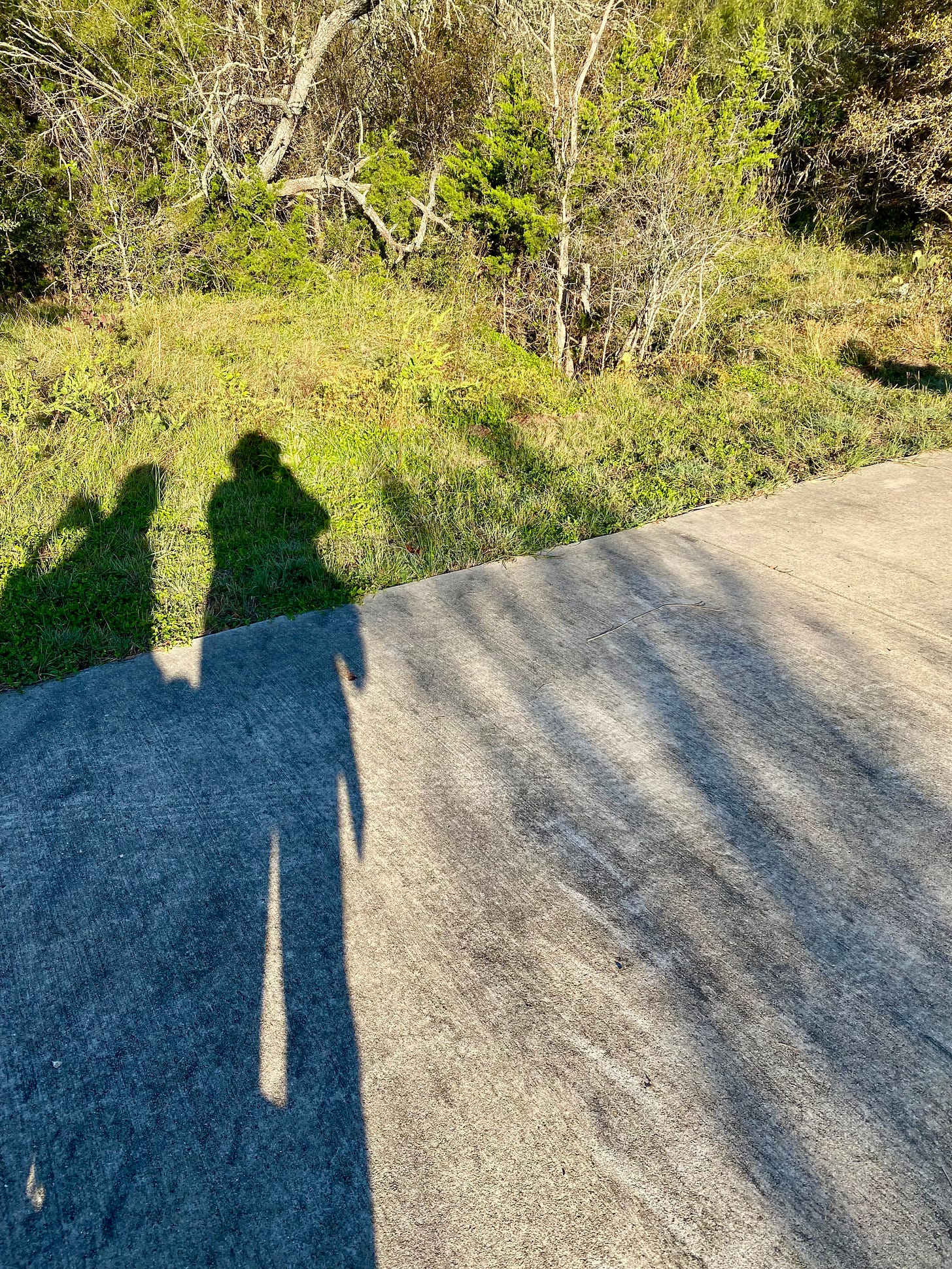Dear Friends,
I love the way the sun bursts through my bedroom’s southeastern window. The light spills into the room, gilding the walls and thawing my toes, still cold from the bathroom tile. I cherish this special winter gift. In the summer the light shines the other direction, confining me to a cavernous air-conditioned den until I venture outside. But this time of year, the sun greets me here, in bed. With warm phantom hands, it grasps my feet, holds them like my wife does at the end of the day.
This morning the sun brings a surprise visitor, a particularly effusive Eastern Phoebe. Like many flycatchers, its song is simple and direct, an ecstatic announcement of its name: FEE-bee! FEE-bee! FEE-bee! The bird swoops across the screen and alights on a stand outside the window. But, I'm not looking at the bird. Well, not exactly. It's the bird's shadow that has captivated me. Even with the shadow’s distortions, the bird retains its big-headed appearance. I follow its plump body down to its bobbing tail, another identifying characteristic.
I wonder how many birds can be identified purely from their shadows. A pelican by the sudden darkness of its mammoth wings. A flock of Rock Pigeons by their small heads and splayed pointy wings that seem to clap together with every flap. A grackle by its long tail, fanned out on takeoff but narrow mid-flight to form a cross shape.
Many birders already favor GISS, or the General Impression of Size and Shape, to identify birds with multiple plumage variations. But, to bird by shadow, one would need to incorporate the science of light and shade, how birds closer to the sun cast broader shadows, how the sun's position can warp their features. One could spend years molding and refining this new methodology.
Birding by shadows is more than a novel experiment. It's another tool at my disposal, part of a repertoire that includes songs, calls, habitat, location, season, behavior, and more—a host of clues that, employed in unison, compensate for my inability to use binoculars. As a person with muscular dystrophy, I am no stranger to such adaptations. When I played music, I tuned my guitar down and clipped a capo to the second fret to counteract the weakness in my fingers. I bought a MIDI keyboard and programmed individual notes to strike complete chords. My body adapts in ways I am not even aware of, muscles grouping together to perform the labor of one.
Adaptation is a universal condition. We adapt to shifts in our politics, to the ebb and flow of our finances, to a warming climate. We adapt as we age, negotiating crises of health and changes in our abilities. We adapt as we lose those we love, redefining our lives in their absence. My own adaptations might be more visible, but they are no less human.
My attendant flattens the bed and tussles with my jeans. This is by far the most strenuous part of my routine. She rolls me on my side and pulls my pants upward, huffing with every tug. She tucks the excess under my right side to keep them centered. With my lungs scrunched, I strain for breath, then grunt as she returns me to my back. It's as much a grunt of tiredness as it is relief, relief for the sudden ease of breathing, and knowing that the hard part is over. I know her back, too, must be thankful to be upright again.
We pause here, take a moment to reset. It's time now for the well-earned mid-routine nap! First comes the sheet, up over the shoulders. Then comes the blanket, teal and white. She raises the bed 30 degrees, then cradles my head into the oxygen mask. The air flows in. It centers my attention on the simple yet essential act of breathing. Inhalation, exhalation. Inhalation, exhalation. My breathing slows, relaxes into a peaceful rhythm. My attendant sprawls on the floor to stretch her back. A few minutes pass, and we are both asleep.
These are adaptations, too: heat pads on my shoulders, breath support from a ventilator, rest when my body needs it. They might be modest. They might not ooze ingenuity. But, like my deepening attention of the birds that surround me, these adaptations sustain me. They make the world not feel so far away. They remind me that I have everything I need: my mind, my spirit, my senses, my humor. My joy. A whole world, from the comfort of my bed.
Enjoy the birds,
Eric
(Paid Subscribers: Scroll down for the answers to January's image description quiz!)
Keep reading with a 7-day free trial
Subscribe to Bird City News to keep reading this post and get 7 days of free access to the full post archives.






